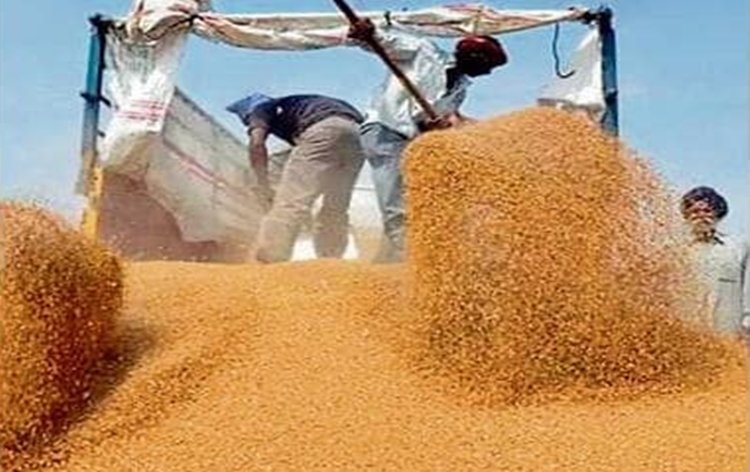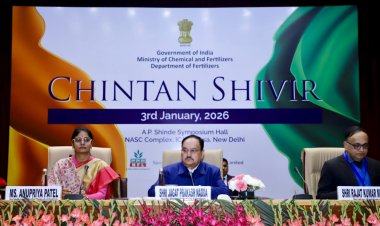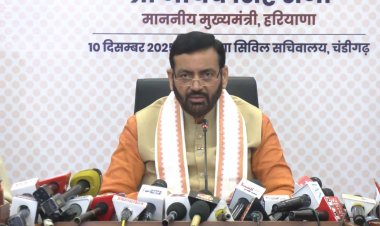Wheat procurement stuck at 187 lt; May stocks at 5-year low in central pool
According to the information available on the CFPP, the wheat procurement in this season has been even less than 187 lt. The government’s revised target was 195 lt. The wheat stocks in the central pool in May have reached a five-year low due to less procurement.

As per the prediction, the public procurement of wheat has failed to reach even the revised target for the Rabi Marketing Season (RMS). According to the information available on the Central Foodgrains Procurement Portal (CFPP), the wheat procurement in this season has been even less than 187 lakh tonnes (lt). The government’s revised target was 195 lt.
The wheat stocks in the central pool in May have reached a five-year low due to less procurement. According to the Food Corporation of India (FCI), the wheat stocks stood at 303.46 lt in May this year. The last time the stocks had been lower than this was in 2017 at 296.41 lt.
Wheat stocks in the central pool in May
|
2017 |
296.41 lakh tonnes |
|
2018 |
353.45 lakh tonnes |
|
2019 |
331.60 lakh tonnes |
|
2020 |
357.70 lakh tonnes |
|
2021 |
525.65 lakh tonnes |
|
2022 |
303.46 lakh tonnes |
(The figures are only for May, Source: FCI)
The government had prohibited wheat export from May 13 onwards so as to increase procurement. The assumption then was that the farmers would come to the mandis to sell their produce. But this did not happen. A total of 179.89 lt wheat had been procured till the date on which the prohibition of export came into effect. A look at the figures reveals that only 7 lt of wheat has been procured since then.
Since 434 lt of wheat had been procured last year, the government had fixed a target of 444 lt of wheat procurement this year. But later it was revised to 195 lt — even less than half the initial target. A total of 17.26 lakh farmers have sold their wheat for the central pool this year. Among them, 15.12 lakh farmers have so far received payments of Rs 33,168.74 crores.
It is believed that the procurement fell due to two reasons. The Russia-Ukraine war led to a fall in wheat supply in the international market and a rise in wheat prices. Initially India, too, was fast enough to jump on the wheat export bandwagon with the government promoting it as well. But soon it came to light that an unusual rise of temperature in March had affected the crop of wheat and the grains had shrivelled. This was especially so in the northern states, leading to a decline in total production. In order to increase procurement, the government relaxed the norms on May 15 and announced that full payment would be made for shrivelled grains up to 18 per cent. Despite this announcement, procurement failed to pick up.
Farmers from Punjab and Uttar Pradesh (UP) had told Rural Voice that the decline in production could be as high as 15-20 per cent. The government had to prohibit wheat export in such a situation so as to maintain its availability within the country. However, the government on its part is yet to make any significant reduction in wheat production estimates. The earlier estimate for wheat production was 11.13 crore tonnes, which has later been revised to 10.6 crore tonnes. A total of 10.96 crore tonnes of wheat had been produced in 2020-21.
According to the CFPP, there has hardly been any wheat procurement in Punjab since the prohibition of its export. Despite the extension of the procurement date, the figures in the state could not even reach 97 lt. In the other major wheat-producing states of Madhya Pradesh (MP), Haryana and UP, too, there has been very little procurement after the prohibition of export.
Experts believe there is another reason for this: the farmers do not want to sell their produce as they expect to get better prices in the future. This also indicates that there is not much room for any steep fall in the prices in the days to come.



 Join the RuralVoice whatsapp group
Join the RuralVoice whatsapp group






































